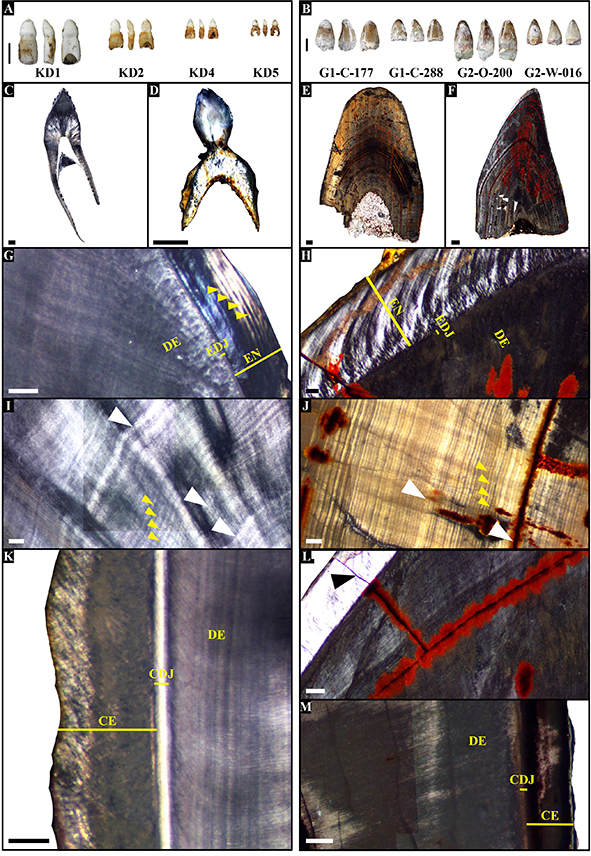GOING DEEPER INTO MODERN AND FOSSIL CROCODILIAN TOOTH MICROANATOMY: WHAT CAN BE INFERRED OF PALAEOENVIRONMENT AND TAPHONOMY FROM HISTOCHEMICAL ANALYSES?
DOI:
https://doi.org/10.54103/2039-4942/15607Keywords:
Crocodylus niloticus; Crocodylomorph; Cretaceous; Lo Hueco; Biomineralized tissue; Hydroxyapatite.Abstract
Teeth provide information about the evolutionary pathway of an organism, its biology and habitat. This is the case even of fossilized teeth, since they have perdurable biomineralized structures, as biological apatite. The material that has been selected for this study comprises teeth from modern crocodilian individuals and extinct Cretaceous crocodylomorphs from Lo Hueco site. Microanatomy, histochemistry and crystallographic nature of enamel, dentine and cementum have been characterized by Polarized Light Microscopy, SEM-EDS, Confocal Raman Spectroscopy and SR-µXRD. A focus has been made on dentine lamination. In the fossil sample short-period incremental lines show alternate presence of dentinal tubules that has not been described previously either in living or fossil archosaur. This could be related to influence of environmental circadian rhythms in the abundance, size and/or activity of cells depositing dentine in the day-night cycle. Regarding histochemical and crystallographic compositions, the major and mostly unique phase is HA, but in the case of fossil teeth, a secondary phase identified as hematite appears locally between discontinuities of the material. Incremental lines would not be related to variation in chemical composition and furthermore do not present different HA crystallographic nature (different directions of HA or different crystallite sizes) either. Only small intensity oscillations are observed in the fossil sample by SR-µXRD which are compatible with the alternating abundance of dentinal tubules. Crystallinity differences between modern and fossil material, as crystallite size and presence of CO32- groups could be explained by postdepositional processes.
Metrics

Downloads
Published
Issue
Section
License
Copyright (c) 2022 JULIA AUDIJE-GIL, MARÍA CANILLAS, FERNANDO BARROSO-BARCENILLA, MÉLANI BERROCAL-CASERO, ADOLFO DEL CAMPO, ARMANDO GONZÁLEZ MARTÍN, JUDIT MOLERA, ORIOL VALLCORBA, MIGUEL A. RODRÍGUEZ, OSCAR CAMBRA-MOO

This work is licensed under a Creative Commons Attribution-NonCommercial-NoDerivatives 4.0 International License.
The journal allow the author(s) to hold the copyright without restrictions.
Accepted 2022-03-15
Published 2022-06-15






